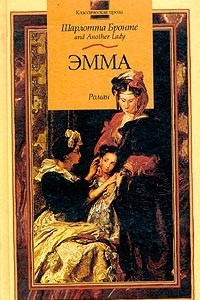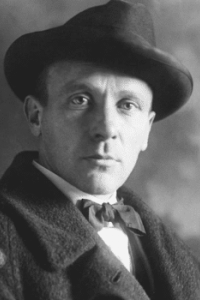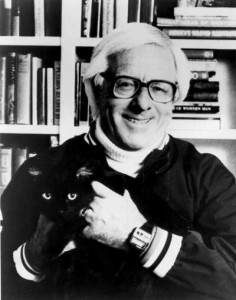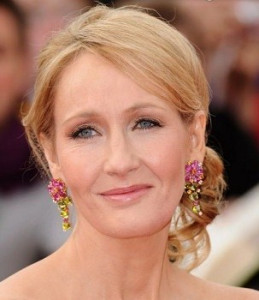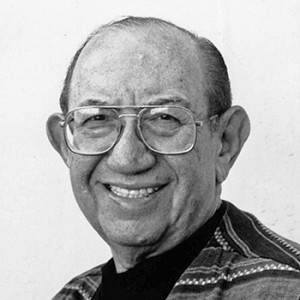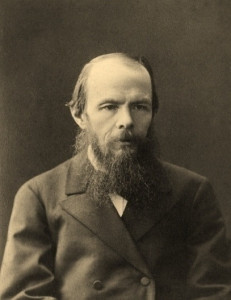-
Жанры
-
Художественная литература
- Приключения 75083
- Фантастика 100897
- Фэнтези 73474
- Детектив 59379
- Ужасы 48028
- Роман 70045
- Классическая литература 60314
- Историческая проза 8094
- Современная проза 141702
- Детская литература
- Культура и искусство
- Научная литература
- История
- Бизнес
- Прикладная литература
- Документальная литература
- Образование
- Дом и семья
- Физическая культура
- Здоровье
- Литература на иностранных языках
-
Художественная литература
- Книги
- Рецензии
- Сообщество
- Блоги
- Цитаты
- Тесты
- Подборки
- Премии
- Конкурсы
- Другое
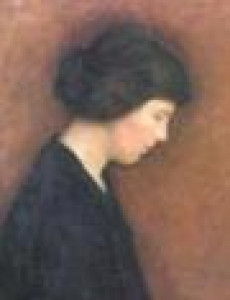
Констанс Сейвери
Краткая биография автора
Constance Winifred Savery was born in Wiltshire on October 31, 1897, the eldest daughter of the Vicar of Froxfield, John Manley Savery, and his wife, Constance Eleanor Harbord Savery. Nina Baker's account in the November 1948 WILSON LIBRARY BULLETIN says Her father was of French Huguenot descent; her mother came of an East Anglian family with Irish and Scandinavian forebears. For all that, her mother's father was "very English." The Bath snapshot of the Savery as a four-year-old was included i...
Constance Winifred Savery was born in Wiltshire on October 31, 1897, the eldest daughter of the Vicar of Froxfield, John Manley Savery, and his wife, Constance Eleanor Harbord Savery. Nina Baker's account in the November 1948 WILSON LIBRARY BULLETIN says Her father was of French Huguenot descent; her mother came of an East Anglian family with Irish and Scandinavian forebears. For all that, her mother's father was "very English." The Bath snapshot of the Savery as a four-year-old was included in Winifred's Thought Book, mentioned below. Four sisters followed: Irene, Phyllis, Christine, and Doreen, or, using their familiar names, Tim, Pems or Phyl, Brown Rabbit, and Ging. Savery was Winifred with company, but Peter with her sisters. Above is a photograph of Froxfield with All Saints Church on the far left and the rectory next to it. Below, their white caps looking much like halos, are the five girls. Constance, always grave when her picture is taken, is on the left. Christine, always smiling, is in the center. Doreen is between them. Phyllis, who never looks quite happy in photographs, is next to Christine, and Irene is on the end. Savery's autobiographical works paint an attractive picture of this lively, loving family. She began writing at a very early age. According to a letter written by Christine in 1980, Constance now aged 82 still writes. I gave it up some time ago -- but Constance has been at it since the age of 3! In a third-person preface to Winifred's Thought Book, which contains samples of compositions up to her tenth birthday, Savery describes her early efforts: Sometimes she wrote in pencil on the backs of circulars, used-up envelopes and old motto-cards salvaged from her father's wastepaper basket. For Anne Commire's Something about the Author, she wrote: I had my extensive private world. Among the blue speedwells and the timothy grass under the hedgerows lived a race of tiny people known to no one but me. I owned an imaginary land peopled exclusively with large families of children. My dolls-house was the scene of innumerable exciting dramas. Paper dolls, cut from discarded books of fashion-patterns, lived thrilling lives in houses built of toy bricks and equipped with home-made paper furniture. Strange figures and faces peeped at me out of a smoke-begrimed ceiling, or a flower-patterned curtain, or the carved woodwork in a church. Walking to and fro in the garden with a beloved broken racquet and an aged tennis ball, I would tell myself, year after year, endless and very melancholy stories about other children. I can vividly remember the day when at a certain bend in a country lane I made the exciting discovery that it was not necessary to 'talk' a story out loud with the aid of bat and ball: one could 'think' it equally well. But I have had a theatre in my head since I was four years old, and on that stage my every story acts itself in moving procession. She was an omnivorous reader. Despite her father's "books galore" she remembered gifts from parishioners decades later. In a 1951 piece for The Junior Book of Authors, edited by Kunitz and Haycraft, she wrote her thanks: Froxfield people always spoke of it as the College. Your tiny house, Mrs. Stubbington, was at the far end of the west side of the great quadrangle, under the shadow of the tall chapel. The Vicar of Froxfield was also chaplain of the College. From the little parlour where you sat invisible, came books for his book-hungry child. Savery also mentions a Mrs. Stubington (sic) and three other book-donating widows from the College in her poem Remembered Charms (1954): Who gave me cakes and kindly looks, And pictures, toys, and books, books, BOOKS, And gladdened oft my childish lot, McKenzie, Stubington, Stiles, and Scott. In 2010 I searched the gravestones around the Froxfield church for these four names, but I was unsuccessful.Sometime in 1906 the eight-year-old Savery wrote a three-line chant beginning "Once round the Hulué stone...." In 1944, looking for a suitable verse, she incorporated that chant into The Memoirs of Jack Chelwood, which was to be published posthumously in 2004. If that qualifies, Savery wrote something in every decade of the twentieth century that subsequently appeared in print.When Savery was nine, her father exchanged parishes and moved to Birmingham. Years later she mentioned to her goddaughter her disappointment in the Birmingham garden, which had only a few laurel bushes, and those very sooty, but she used that experience in 1934 when she recaptured her disappointment in a short story, A Book of Beauties. If the story is an indicator, she learned to find beauty in Birmingham, also.While she was still in Wiltshire, Savery saw herself in print: The first number of the family magazine was produced by an eight-year-old editor on the blank portions of the leaflet in which the National Protestant Church Union announced its forthcoming marriage to the Church of England League. The blob-and-triangle illustrations took more than their share of the available space; but careful squeezing made room for a poem about 'chrysanthems' bobbing their heads on a wet, windy winter's day,... [Rise and Fall of a Family Magazine] Three years later, in Birmingham, there was another family magazine, and when it faltered, others followed. Savery attended King Edward VI High School for Girls, left, a school she renamed King Arthur's and used as a setting for a short story, Improving Inky, and two books, Danny and the Alabaster Box and Redhead at School. She also wrote at least three articles in the 1950's praising the school's music master, Alfred Gaul. As a schoolgirl, Savery participated in writing competitions sponsored by girl's magazines, and two of her compositions were published in 1913: The Tricker Tricked in SUNSHINE and three views of a seaside holiday, not formally titled, for GIRL'S REALM.King Edward's prepared Savery well, and, in 1917, she won an Exhibition to Somerville College to read English, becoming a member of the first graduating class in which Oxford awarded degrees to women. In March of 1971, she wrote a 26-page letter to Joanna Richardson containing a memoir of her life at Oxford. In a piece for ISPESCOPE she mentions reading Anglo-Saxon and Gothic with Joseph Wright, "a gruff, terrifying, golden-hearted Yorkshire man." In the year she took her degree, 1920, she wrote a review and a poem signed C., S.C. (Constance, Somerville College) that were published in the March issue of the Oxford organ for the Women's Colleges, THE FRITILLARY. Neither the British Library nor the Bodleian Library has this issue, but Savery retained hers. While at Oxford she praised town and university in a poem, The Fool Adoring, which was never published.After leaving Oxford, Savery took her Secondary Teacher's Diploma at the University of Birmingham with a thesis on teaching English poetry. Shortly thereafter she became a professional writer by earning the princely sums of one guinea for Where Roses Hang over the Wall (YOU AND I, 1923) and three guineas for The Fairy Godbrother (THE GUIDE, 1924). She translated some seventeenth century French verse for a competition in the JOURNAL OF EDUCATION AND SCHOOL WORLD in 1925, signing herself 'Dolores.' Although she did not win, her verses were praised and printed. There is a copy in the British Library.Reading from IPSESCOPE again: On leaving college, I taught for a time despite hankerings to write ("Literature," observed my prudent father, quoting from one of his many books, "is a good staff but a bad crutch")... Savery received her M.A., with Honours, from Oxford in 1927. Here she is with Christine, another Oxford graduate. Savery had been teaching, which she disliked, for something over two years when her mother died, and her elderly father, now Rector of Holy Trinity, Middleton-cum-Fordley, asked her to come home from Birmingham and help with his East Anglian parish, right. She assented gladly. Based upon her work diaries, between church duties and family illnesses, there was limited time for composition; nevertheless, a desire to write coupled with the family's need for income sent her as often as possible to her composition books. She had found her vocation and, as Christine observed later, never stopped.Her father retired to Reydon, three miles from the sea near Southwold. There she was to hear wartime air raid sirens over seventeen hundred times. World War Two began in England in 1939, which was also the year in which her father died. Between 1929 and 1939, she wrote six novels, a book of collected allegorical fables, nearly sixty other short stories, seven services of song, at least ten stories for broadcast on the BBC Children's Hour, over a dozen articles, and an unknown number of poems. She had learned her trade. In her first book, Forbidden Doors (1929), she overreached herself according to THE TIMES (London), and the book's revision as Tenthragon in America a year later didn't suit the NEW YORK TIMES for the same reason. It was a long time before she again attempted a full-length book for an adult audience, but her books for children were successful from the beginning. She used either no name or a pseudonym for her first ten short stories, after which she published confidently as Constance Savery. What I consider her best book, Green Emeralds for the King, was published in 1938, but the publisher's warehouse was bombed during the war, making it difficult to find copies today.As her book production increased in the 1940's and she found an American market, Savery wrote fewer short stories; nevertheless, her output was impressive. Among the ten novels published that decade were three of her best, Enemy Brothers (1943), The Good Ship Red Lily (1944), and Blue Fields (1947), as well as Emeralds for the King (1945), the highly praised American version of Green Emeralds. During the same time she wrote thirty short stories, most of them for the Methodist Publishing House (U.S.A.), which distributed them in Sunday School magazines. She also wrote fourteen articles, many for the Methodists, and two short biographies. She was busy in other ways as well. Writing in 1949, she says [IPSESCOPE]: Owing to a constitutional inability to say NO, I find myself Secretary of the Church Council, Diocesan Representative for the Parish, temporary enrolling member for the local branch of the Mothers' Union (they could not find anyone else), and Superintendent of a Sunday School of 90 children with only one other teacher. I am not cut out to be a Sunday School teacher, and I never know from Sunday to Sunday what my ninety balls of quicksilver will take it into their dear little wicked heads to do next. I do not seem to profit by age or experience or even from the reading of text-books innumerable. I read American Sunday School papers when I can get them, sorrowfully comparing the quiet efficiency that seems to prevail on the other side of the Atlantic with my own hap-hazard scramble. Savery continued to write popular books for her American publisher, Longmans, Green and Co., but she also began a long association with the Lutterworth Press in London, which published inspirational books that were frequently awarded as Sunday School prizes, left. She received welcome royalties from Longmans, but Lutterworth had a much smaller budget and usually limited her to a book a year. None the less, during the fifties she wrote sixteen books and two serials, besides others that were republished as books, and another five short stories. She also contracted with the Methodist Publishing House (U.K.) for two year-long series of monthly articles about books and authors, I Must Read them Again and The Attic Bookshelf, to which she added another half dozen articles on miscellaneous subjects. During this period, her fiction continued to be directed to children, but virtually all the articles were written for adults. The articles for METHODIST MAGAZINE, in particular, forced me into a long course of heavy reading of long neglected authors.During the 1960's she wrote her last book for Longmans, The Reb and the Redcoats (1961), which was favorably received and is well-regarded today. She wrote fourteen books for Lutterworth, increasing her usual one-per-year quota by writing four books for younger children. Of these, I particularly like The Silver Angel (1968), while one of the others, The Sea Queen (1965), has never gone out of print. Besides these books she wrote a couple of short stories and a half a dozen articles, mostly for children.Savery turned 73 during 1970, but continued to write for Lutterworth. Her last two stories, dealing with religious intolerance (The City of Flowers, 1970) and social issues (The Drifting Sands, 1971), were less successful with her young readers, but God's Arctic Adventurer (1973), a biography of William Bompas, remains in print after thirty-five years and is on the shelves of many Canadian libraries. Discouraged by trends in children's books, she wrote in her diary: It has been very difficult to write lately, and I doubt whether I shall do much more. The field of children's literature has narrowed lately, owing to television and earlier adolescence: the child of to-day leaps from picture-books to fully adult books with no intermediate stage (though some remain at the picture-book or "comic" stage all their lives!) And the world of to-day becomes ever more distasteful to me, so that I prefer to write semi-demi-historical stories, which are not popular, least of all with the young. I can't blame the young; for in my own youth I took the same point of view: what was the point of writing about people who were dead?Eheu, fugaces! I have had a most enjoyable writing life, in spite of all its ups and downs and disappointments. I would not change it for any other on earth, and I thank God that He saw fit to bestow on me this dear, dear joy. After which she went on writing for another twenty-five years!Savery's only play, No King but Christ (1976), was appealing, but it was not widely distributed and is impossible to find today. During the 1970's Savery gave some attention to her posterity. She made a five-volume fair copy of her work diary, dating from 1913 to 1973, and donated the volumes to the manuscript collection at the University of Oregon. In addition to an invaluable list of her works, they include ten unpublished essays and poems, along with some reminiscences about her career such as the one just quoted. These diaries end in 1973, but Savery also filled four small notebooks with the lists of which manuscripts were submitted to which publishers, and the last of these entries is in 1990. These are in the Oregon library as well. In 2010, work diaries and a true copy were discovered for the years 1973 to 1998. These have been indexed and are in the Oregon archives, but my scans were lost when my hard drive died in late July, so those diaries are not yet included in this web site. In the early 1970's Savery transcribed her childhood writings, Winifred's Thought Book, and donated the result to the de Grummond Children's Collection at the University of Southern Mississippi.The arrival of her eighth decade didn't stop her. In 1980, Dent & Sons published Emma by Charlotte Brontë and Another Lady. Savery was 'Another Lady.' A true copy of the manuscript for Emma is in the de Grummond Collection, page after page of clear, regular, unedited handwriting. A letter from her sister Christine says that it was accepted by Dent at first reading. The first nineteen pages are Brontë's, who died without indicating what she intended for the rest of the novel. The remainder, ninety percent of the story, is Savery's. The book was very successful, was republished in the United States, and remained in print until about 2000, when Emma Brown, another completion, appeared on the market. When one surveys library catalogues across the English-speaking world, the Savery title that most commonly remains on their shelves is Emma. Shortly after its publication Dutch and Spanish editions appeared, and recently I found one in Russian "by Sharlotta Bronte and Another Lady."During the early 1980's, Constance's sister Doreen became terminally ill, and to amuse her Savery wrote a full-length sequel to Green Emeralds for the King entitled Haggiston Hall. There is a description of this novel in the manuscript section. Savery's creative powers and vivid characterizations were still with her as she approached her ninetieth birthday.Unfortunately, though she remained fully alert and "interested in everything" (Sims and Claire, Encyclopaedia of Girls' School Stories), Savery's eyesight diminished to the extent that she was declared legally blind. It was at this time, from a Quaker home, Resthaven, in Stroud, Gloucestershire, that she wrote a synopsis of an unpublished novel, The Memoirs of Jack Chelwood, which led to its subsequent editing and posthumous publication in 2004. During the same decade she recorded twenty-one of her poems, many unpublished, on cassette tape with helpful editorial comments and saw two of her poems from the 1930's published in verse collections. Celebrating the 75th anniversary of the granting of degrees to women, Oxford recognized Savery, the only surviving member of the 1920 class. THE GUARDIAN (left) featured her on October 14, 1995. In the late summer of 1996 she undertook a rewriting of The Quicksilver Chronicle, a novel she began as a short story in 1918 and rewrote again and again in the intervening eight decades. The 692-page handwritten manuscript was completed in September of the following year. It was an astonishing achievement, since she could not read clearly either what she was writing or what she had written before. She was satisfied with her effort and discarded the earlier versions of the novel; however, a nine-chapter fragment of the older version remains to verify that she had rewritten her novel, not simply edited it.A few days before her 100th birthday, she attended an Oriel reception in her honor, where she was presented with a picture of Somerville College, a momento of her graduation from Oxford in 1920. Of that reception she wrote: I have done nothing to deserve being a guest of honour except to outlive all the other women in the first group that was admitted to degrees! It was a very grand occasion for a very insignificant person. Not long thereafter she signed a contract authorizing the republication of The Reb and the Redcoats, which appeared just weeks after her death and contained her recent recollections of how she came to write the novel, together with a word or two about Stroud, her retirement community.In 2001, Enemy Brothers was republished, followed in 2002 by an audio version of the same story. The Russian translation of Emma in 2001 and the posthumous publication of Jack Chelwood in 2004 have already been mentioned. Vers la Cité Dorée, the French translation of To the City of Gold, was issued in November of 2006. Truly, Constance Winifred Savery is still with us.
На нашем книжном сайте Вы можете скачать книги автора Констанс Сейвери в самых разных форматах (epub, fb2, pdf, txt и многие другие). А так же читать книги онлайн и бесплатно на любом устройстве – iPad, iPhone, планшете под управлением Android, на любой специализированной читалке. Электронная библиотека КнигоГид предлагает литературу Констанс Сейвери в жанрах .
Творчество Констанс Сейвери
На нашем сайте представлена 1 книга автора Констанс Сейвери. Самая популярная по мнению наших читателей "".
Последний, незавершенный роман Ш.Бронте (1816-1855) "Эмма", впоследствии дописанный другой английской писательницей К.Сейвери, скрывшейся под псевдонимом "Another Lady", впервые публикуется на русском языке. В книгу включены интересные материалы о единственном в своем роде литературном феномене: "трех сестрах" из провинциального английского городка Хоуорт - Шарлотте, Эмили и Энн Бронте.
Похожие авторы

Если у Вас возникли вопросы по работе сайта - напишите нам!
нашли ошибку на странице!

Нейросеть ориентируется на оценки прочитанных вами книг
поиск

Найдите книгу, автора, подборку, издательство, жанр, настроение или друга на Книгогид
подборки

Создавайте подборки с книгами, которые вы прочитали, подписывайтесь на подборки интересных пользователей.
Регистрируясь, вы соглашаетесь с нашими Условиями и политикой конфиденциальности
Книгогид использует cookie-файлы для того, чтобы сделать вашу работу с сайтом ещё более комфортной. Если Вы продолжаете пользоваться нашим сайтом, вы соглашаетесь на применение файлов cookie.











